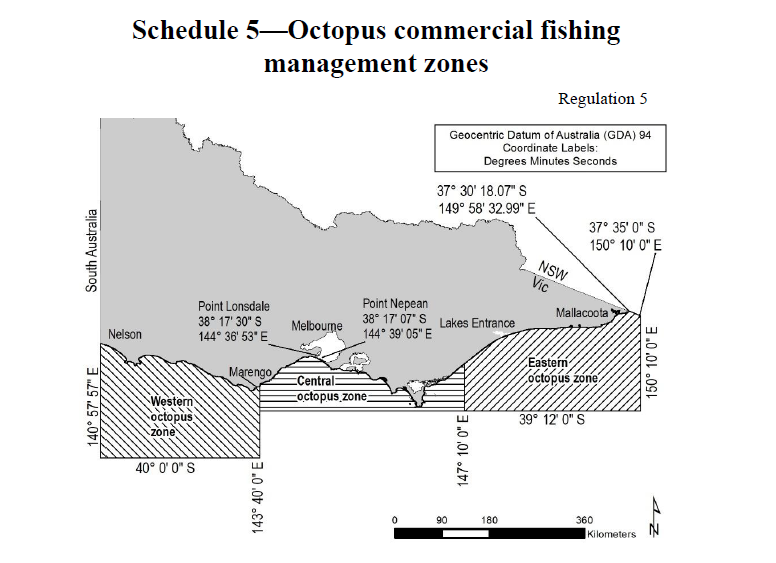Octopus Fishery
Victoria’s new Octopus (Eastern Zone) Fishery harvests mainly pale octopus – Octopus pallidus – in East Gippsland using purpose-built unbaited traps which minimise bycatch. The fishery commenced on 1 August 2020.
This new, standalone octopus fishery builds on the success of the emerging boutique octopus fishery which has established within another licence class over the last 5 years.
The ongoing, tradeable octopus licences and quota will provide more fresh seafood for Victorian consumers, improve business security for operators and enable more confident investment into boats, equipment and staff – securing valuable regional jobs in East Gippsland.
Fishery location
Three zones have been established for the management of commercial octopus fishing in Victoria.
Octopus Fishery Access Licences authorise commercial take of octopus from the eastern octopus zone. This is where the majority of commercial octopus fishing in Victoria has occurred to date. It extends approximately from Seaspray to the Victorian/NSW border and out to 20 nautical miles offshore, except for marine reserves.
Octopus fishing in the central and western octopus zones is less established and is being managed by the VFA through exploratory, temporary permits.

Octopus species
The fishery is mainly based on pale octopus (Octopus pallidus). Maori octopus (Macroctopus maorum and Gloomy Octopus (Octopus tetricus) may also be taken.
Pale octopus is a medium sized octopus with arm span of up to 60cm. Pale octopus are found in bays and coastal waters in Victoria, South Australia, Tasmania and less commonly southern New South Wales. Their main habitat is sandy substrates, often near beds of sponges or sea squirts. Female pale octopus lay large eggs which are attached to hard surfaces. After hatching, the hatchlings crawl away and can start to hunt for their own food.
Fishery management
The new commercial fishing licence class for octopus was established in the Fisheries Regulations 2019, following public consultation.
An Independent Allocation Panel was then established to advise the Minister for Fishing and Boating on eligibility for an Octopus Fishery Access Licence, as well as the most appropriate method for allocating the octopus resource amongst these licence holders.
The Octopus (Eastern Zone) fishery is now underway and is managed primarily by:
- Limited entry: There are 11 licences issued under the Fisheries Act 1995 which authorise the take of these three octopus species in the Octopus Eastern Zone;
- Harvest managed using quota under a Total Allowable Commercial Catch (TACC): The TACC and value of each quota unit is set annually for the upcoming quota year. Individual quota units may be transferred between licence holders in the fishery.
- Gear restrictions: A tiered system of limits apply to the number of lines of octopus pots, and the number of octopus pots attached to each line, that may be used to fish the quota allocated to each access licence.
The 2020/21 Total Allowable Commercial Catch (TACC) for the eastern octopus zone is 68.7 tonnes.
Licence holders are required to complete a research sampling logbook alongside their normal daily catch record, to provide additional information to assist management as the fishery continues to develop.
Vessel monitoring systems will be in place for the octopus fishery from 1 November 2020.
The Octopus Fishery Access Licence is a transferable licence class. Licence holders wishing to permanently transfer their licence to another party must fill out Form 19 Transfer Fishery Licence and submit it with the applicable fee to the Victorian Fisheries Authority.
There is a range of regulations relating to the fishery, including reporting requirements, in the Fisheries Regulations 2019 .
